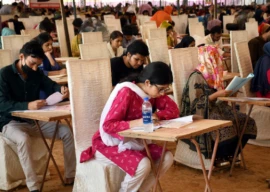
In the 11th meeting of the Punjab PDWP of current fiscal year 2019-20, the party approved expansion of family welfare centres and introduction of community-based family planning workers at the cost of Rs3.89 billion.
The meeting was presided over by the Planning and Development (P&D) Board Chairman Habibur Rehman Gilani and attended by members of the P&D board, provincial secretaries of departments concerned and other senior officials.
The expansion of family welfare centres and introduction of community-based family planning workers programme was initially incorporated in the annual development programmes (ADPs) between 2014 and 2018. The aim was to ensure easy accessibility of quality family planning and reproductive health services across Punjab to control the population burst.
Ministry forms action plan for population control
It had critically planned two components, including the expansion of family welfare centres and introduction of community-based family planning workers to improve the functioning and service delivery network of the Punjab Population Welfare Department (PPWD).
As per available information, each centre roughly caters to a population of 5,000 to 7,000. These centres operate from rented buildings and are located predominantly in rural areas.
The existing number of these centres is too low to ensure blanket coverage of family planning facilities for the provision of contraceptives. Therefore, a dire need emerged to reach out to a maximum number of people and increase demand for small family norms.
Initially, the government decided to establish family welfare centres at the district level, but soon it was planned to increase the number to reach union councils in a phased manner.
Following 1992’s Village-Based Family Planning Worker Programme (VBFPW) of the Ministry of Population Welfare, the government prepared a similar programme at the provincial level.
Population growth grabs national attention
The VBFPW was rolled out at national level to expand access to family planning in rural areas. Its female workers were trained to provide community-based family planning services at the household level and thereby contribute to increasing contraceptive use.
The nationwide surveys found that married women, living within five kilometres of these workers, were significantly more likely to use a modern reversible method than women who had no access. A 10% increase in contraceptive prevalence rate was reported in another study just 16 to 18 months after VBFPW introduction. The Population Welfare Department planned to revive this cadre as community-based family planning workers (CBFPWs) to bridge the gap between the facility and the community.
Earlier, in December 2018, the PDWP approved the expansion of family welfare centres and introduction of community-based family planning workers (revised) at the cost of Rs2.74 billion in 8th meeting of the last fiscal year.
Meanwhile, the meeting also decided to enhance drilling services through procurement of power rigs at a cost of Rs600 million. The authority also set aside Rs858.147 million to widen and improve the Rawalpindi-Chakri Road (Mohra Chapri) to Motorway Interchange.
Published in The Express Tribune, August 28th, 2019.



1719319701-0/BeFunky-collage-(10)1719319701-0-165x106.webp)






1726722687-0/Express-Tribune-Web-(9)1726722687-0-270x192.webp)
1735025557-0/Untitled-(96)1735025557-0-270x192.webp)











COMMENTS
Comments are moderated and generally will be posted if they are on-topic and not abusive.
For more information, please see our Comments FAQ